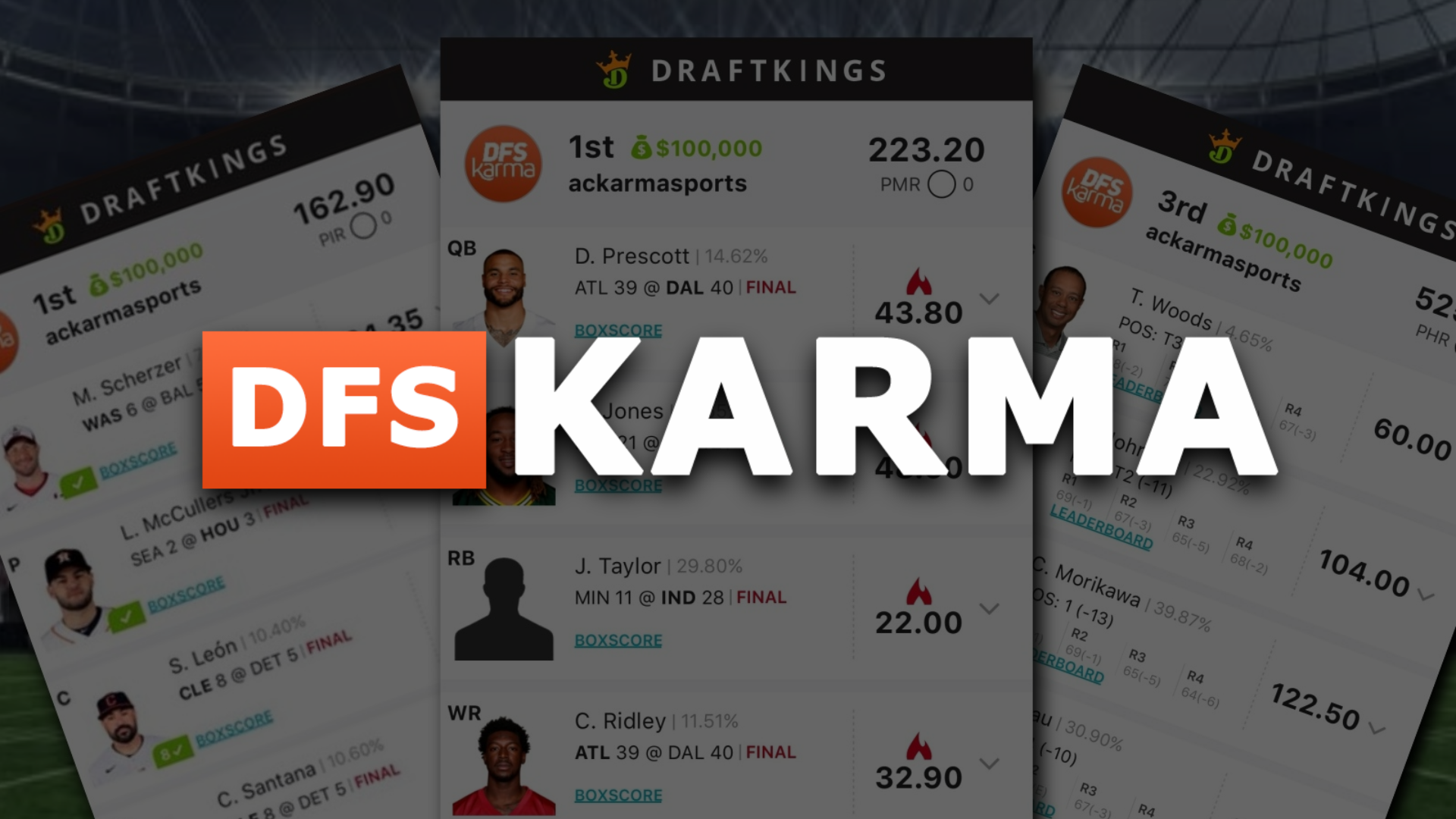
Welcome back to the Data Viz DFS NFL Preview utilizing data science & data visualizations – today we will continue utilizing red zone receptions, red zone targets, & total TDs to recap the first half of the season and look forward to the second half of the season for TEs. It would be a good idea to go back and read the Mid Season WR Data Viz Recap to get familiar with the key data science terms utilized in this article – not to mention it may be the most entertaining article ever written. But if you’re feeling lazy or your mouse click stopped working I’ll make it easy for you – here is a quick refresher.
Key Terms:
Scatter Plot: A graph where the values of two variables are plotted along two axes (x & y), the pattern of the resulting points reveal if any correlation is present. The purpose of a scatter plot is to show possible associations or relationships between two variables.
Correlation: The process of establishing a relationship or connection between two or more variables.
Positive Correlation: The values of one variable increase as the values of the other increase. Basically if you improve one variable – you will see improvement in the other.
R Squared Score / Correlation Score: The main purpose is to predict future outcomes on the basis of other related information. In general the higher the R-squared score, the more confident you can be when predicting future outcomes.
Okay now that you’re a data science expert or skipped past the definitions, let’s get to the reason you’re here – hard hitting tight end analysis.
For this weeks analysis we will be utilizing TE red zone statistics. After running a correlation analysis – I found red zone receptions has a .52 correlation score, red zone targets has a .68 correlation score, & total TDs has a .67 correlation score when compared to fantasy points per game. If you recall from last week or yesterday’s article – this means these statistics all have a strong relationship or connection to fantasy points per game & more importantly a strong positive correlation – as one increases the other has a high probability of increasing.
Today’s first viz is 3 different scatter plots – each statistic on the x-axis is compared to fantasy points per game (y axis). The three statistics on the x-axis are: red zone receptions, red zone targets, & total TDs. Each circle represents a different WR, the color is based on total fantasy points (blue is good & orange is bad), & all are positively correlated based on their high r squared score (>.5).
Key Takeaways:
Red zone targets has the highest correlation score – even higher than total TDs (barely). This tells us red zone targets has the strongest positive relationship with fantasy pts per game.
TEs are more reliant on red zone performance than WRs. This becomes evident when you compare the TE red zone targets correlation score (.68) to the WR red zone targets correlation score (.54) – .14 higher. If you take a step back and think about how the TE position works – this makes sense. TEs normally do not rack up nearly as many high yardage games, so red zone performance becomes much more important for TEs to put up big fantasy weeks.
To state the obvious – we want tight ends who have high red zone targets & can convert those targets into TDs.
These are not hard and fast rules – just interesting observations with statistics to back them up. The point of the statistical analysis is to point you in the correct direction when preparing for the week / season. At the end of the day, you must feel comfortable with the picks you make – even if that means sometimes going against the stats. My goal is to present an cogent argument utilizing statistics – but as we know human elements often play a huge role in fantasy performance. So use the stats to get you started then rely on that beautiful gut of yours for the final decision.
This viz is a stacked bar graph ordered by red zone targets, the width of the bar represents red zone receptions, & the color of the bar represents total TDs (blue is good & orange is bad). All three statistics represented have a positive correlation when compared to fantasy points per game – continue reading for the some key takeaways from the first half of the season.
TE Red Zone Targets (Min 3 Games & 8 PPG)

Key Takeaways:
Travis Kelce is the most targeted TE in the red zone, but has not coverted those targets at a high rate. He leads qualified TEs with 11 red zone targets (2 more than 2nd place), but unfortunately for Kelce he hasn’t been the best at converting these targets into receptions or TDs. He has only converted 2 of those 11 targets into receptions & has only 2 total TDs. With that said, he is still the 2nd highest scoring fantasy TE. Kelce is one of the few TEs that rely heavily on yards to score fantasy points – rather than TD reliant. As Mahomes gets healthy – expect Kelce to convert more red zone opportunities. Kelce is a stud and should be drafted as one going forward, especially when Mahomes is back. I expect Kelce to end the year as the 2nd best TE, so who will be 1st?
Austin Hooper is the best TE in the NFL. Hooper currently ranks 1st in fantasy pts per game, 2nd in red zone targets (9) & 1st in TDs among qualified TEs. Hooper is lethal in the endzone – converting 5 of 9 targets into receptions & has scored 5 total TDs. I have Hooper ranked slightly higher than Kelce going forward as the #1 TE.
Darren Fells is a red zone monster. Fells seems like a random name to see so high on the list – but once you dive into the numbers it makes sense. Fells has 8 red zone targets, has converted 7 of those into receptions & 5 total TDs – making him the 6th highest scoring fantasy TE. That is unbelievable production, especially coming from a cheap TE. So now the question is can Fells continue this production going forward? Fells doesn’t play the most snaps in the world but he has established himself as a real red zone threat for Deshaun Watson. Fells is an awesome value play – but he may mix some stinkers in due to the low volume of snaps. If you are looking to save money on the TE position – Fells could be an awesome choice depending on the match up.
Darren Waller is the most underrated TE in the NFL. Waller currently ranks 3rd in fantasy pts per game – with 7 red zone targets, 6 red zone receptions, & 3 total TDs. Waller is a must start week in and week out – expect Waller to continue this success the remainder of the season.
Will Dissly is the biggest outlier. Dissly is currently ranked 8th in fantasy pts per game but has only received 5 red zone targets. Well the reason he has been so successful this year is his efficiency converting those 5 red zone targets. Dissly has converted 4 of 5 targets into receptions & has scored 5 total TDs. Can Dissly keep this up? I personally do not think so. I would not feel comfortable playing Dissly week in and week out but there are definitely worse options if you’re in a pinch. Keep an eye on the match ups and try to strike when Dissly is hot.
T.J. Hockenson is a fraud. Early this season Hockenson was the hot new TE on the block, well half way through the season it is very clear he is average at best. Hockensen ranks 16th in fantasy pts per game & has 2 total TDs. Hockenson is not a real option at TE going forward – stay away.
Jason Witten is vanilla. The most standard TE in the league – average numbers all around. Witten averages less than 10 ppg – thats gonna be a no for me dog.
I would not trust George Kittle in the 2nd half of the season. I am not as high on Kittle as others. He obviously has talent, but due to the system the 49ers run and other circumstances (injuries) he does not get the opportunities other TEs receive. Kittle has only been targeted 6 times in the red zone – this is most likely due to Mike Shannahan’s love of the run game. Not only does Kittle not get targeted in the red zone – he has not been the best at converting these targets. He only has 3 receptions & 1 TD. Kittle is not worth the price going forward, especially if he is going to continue battling injuries.
Ask me any questions about Data, Visuals, DFS, etc. on Twitter (@StephenDataViz) or Instagram (@StephenDataViz)








